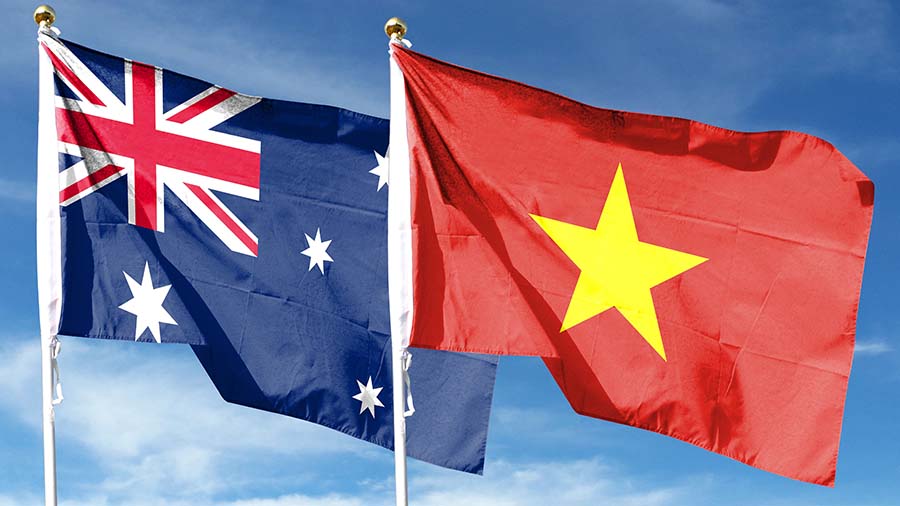Industry Spotlight: Vietnam’s Renewable Energy Market
By Mike Vinkenborg
Due to rapid industrialization, energy consumption growth levels have been double that of Vietnam’s already high GDP growth levels, growing on average with approximately 12 percent per year from 2006 to 2015. As a result, almost all Vietnamese receive electricity at home, and the last rural villages are expected to be powered up by 2020.
On 18 March 2016, the government revised the 7th Power Development Plan for 2011 to 2030 and placed a stronger emphasis on renewable energy and the liberalization of the market. Fossil fuels and coal, recently overtook hydropower’s throne by becoming the main supplier of Vietnam’s energy consumption and were scheduled to grow strongly in the 2011 version. In the revised 2016 version, however, the 2030 target for coal production has been cut by approximately 30 percent from 76 gigawatt-hours (GW) to 55GW. Contrary, renewable energy – generated by solar technology in particular – will play a much larger role in 2030 compared to the 2011 estimate.
Hydropower remains the most popular alternative, but its market share will take a large hit from now to 2030. In the coming years, solar, wind and bioenergy are ready to establish themselves as new energy sources in Vietnam. Together, they accounted for only one percent of total production in 2014. By 2030, this is expected to grow to over 10 percent as the government welcomes private investments in the energy sector and implements incentives for investments.
![]() RELATED: Pre-Investment Advisory Services from Dezan Shira & Associates
RELATED: Pre-Investment Advisory Services from Dezan Shira & Associates
Privatization of the power market
To boost competitiveness in the power sector, the government is privatizing its three main electricity generating companies Electricity of Vietnam (EVN), PetroVietnam and Vinacomin. The equitization of these firms is estimated to be completed by 2018, thereby opening the retail power market to private investors.
Regulations on a competitive wholesale electricity market are scheduled for completion in June 2017, after which EVN will stop functioning as the single buyer in the generation market. Following the wholesale market, electricity retail sales are set to be privatized as well. The Ministry of Industry and Trade (MOIT) has been asked by the government to cooperate with EVN to set this in motion, and Vietnam hopes to have a competitive retail electricity market by 2023.
Potential of Vietnam’s sunshine
Having one of the highest annual hours of sunshine globally, approximately 2,000 to 2,500 on average, Vietnam’s potential for solar energy production is high. Vietnam’s solar map shows that the Southern regions in particular are suitable, reaching average solar intensity levels of 5kWh per square meter per day. By 2030, Vietnam hopes to produce 12GW of solar energy annually, coming from insignificant levels today.
Due to a lack of feed-in tariffs (FIT), solar energy production is currently minimal; however, the MOIT has proposed incentives for future investments in solar energy. Numbers are expected to reach FITs of US$0.112 per kilowatt-hour (kWh) to US$0.167/kWh, depending on the difference between electricity consumed and generated. On islands, this can go up to US$0.19/kWh.
Besides FIT, additional land incentives, investment incentives, import tax exemptions and corporate income tax reductions will be provided once the proposal is accepted. As such, the country is preparing itself for large investments in the solar energy sector, and through the revised Power Development Plan Vietnam aims for the output of solar energy to go up from virtually nothing now to 0.8GW in 2020 and 12GW in 2030, the latter accounting for 3.3 percent of total energy production in that year. Private investors, both domestic and international, are keeping a close eye on these developments and once these incentives are implemented the country is poised to receive large sums of investments in solar energy production.
![]() RELATED: Industry Spotlight – Vietnam’s Beverage Market
RELATED: Industry Spotlight – Vietnam’s Beverage Market
Outlook
To accommodate the growth in electricity consumption a sustainable way, the government is slowly shifting its focus towards renewable energy. For example, large power generating firms (over 1GW yearly production) should generate at least 3, 10, and 20 percent of its energy through renewable energy sources by 2020, 2030, and 2050, respectively, according to the revised Power Development Plan.
Vietnam’s long coastline and many sunshine hours give it a lot of potential for renewable energy sources such as solar and wind energy. By 2030, the government aims to produce 18GW of electricity from those two combined, compared to virtually nothing today. And with the privatization of state-owned enterprises such as the Vietnam Electricity Group (EVN), the electricity market is set to become open and competitive.
Solar energy generation in particular is expected to surge. Once the proposed incentives for solar energy generation are accepted, the largest burden – lack of feed-in tariffs – for this sector will be overcome. Furthermore, the wind power sector shows high potential. Due to low prices of US$0.078 per kWh for wind energy, this sector currently remains underdeveloped. However, with a total of 8.6 percent of Vietnam’s territory being suitable for wind energy development (compared to a mere 0.2 percent in Thailand and Cambodia, for example), the potential in the country is huge. As such, investors should keep a close eye on developments in the country, as Vietnam is getting ready for large amounts of investments in solar and wind energy projects to keep up with increased energy consumption and meet government goals.
|
Asia Briefing Ltd. is a subsidiary of Dezan Shira & Associates. Dezan Shira is a specialist foreign direct investment practice, providing corporate establishment, business advisory, tax advisory and compliance, accounting, payroll, due diligence and financial review services to multinationals investing in China, Hong Kong, India, Vietnam, Singapore and the rest of ASEAN. For further information, please email vietnam@dezshira.com or visit www.dezshira.com. Stay up to date with the latest business and investment trends in Asia by subscribing to our complimentary update service featuring news, commentary and regulatory insight. |
![]()

Annual Audit and Compliance in Vietnam 2016
In this issue of Vietnam Briefing, we address pressing changes to audit procedures in 2016, and provide guidance on how to ensure that compliance tasks are completed in an efficient and effective manner. We highlight the continued convergence of VAS with IFRS, discuss the emergence of e-filing, and provide step-by-step instructions on audit and compliance procedures for Foreign Owned Enterprises (FOEs) as well as Representative Offices (ROs).
 Navigating the Vietnam Supply Chain
Navigating the Vietnam Supply Chain
In this edition of Vietnam Briefing, we discuss the advantages of the Vietnamese market over its regional competition and highlight where and how to implement successful investment projects. We examine tariff reduction schedules within the ACFTA and TPP, highlight considerations with regard to rules of origin, and outline the benefits of investing in Vietnam’s growing economic zones. Finally, we provide expert insight into the issues surrounding the creation of 100 percent Foreign Owned Enterprise in Vietnam.
 Tax, Accounting and Audit in Vietnam 2016 (2nd Edition)
Tax, Accounting and Audit in Vietnam 2016 (2nd Edition)
This edition of Tax, Accounting, and Audit in Vietnam, updated for 2016, offers a comprehensive overview of the major taxes foreign investors are likely to encounter when establishing or operating a business in Vietnam, as well as other tax-relevant obligations. This concise, detailed, yet pragmatic guide is ideal for CFOs, compliance officers and heads of accounting who must navigate Vietnam’s complex tax and accounting landscape in order to effectively manage and strategically plan their Vietnam operations.
- Previous Article Vietnam – Eurasia Economic Union Free Trade Agreement Comes into Force
- Next Article Stuck in Traffic: Opportunities for Urban Infrastructure Development in Ho Chi Minh City

































